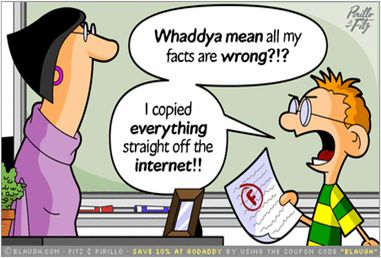 |
| Image Source: https://farm9.staticflickr.com/8491/8331776794_b48dc84cde_n.jpg |
 |
| Image Source: https://cmleinfofeed.files.wordpress.com/2015/04/ss2.png |
Massive Open Online Courses (MOOCs) were developed to give students affordable opportunities for higher education. While many top universities, such as MIT, offer MOOCs, there is still some question about the overall effectiveness of this learning platform. However, it has been gaining ground in the education field, with educators heavily participating and creating a much needed educational "renaissance" (Newton, 2015). This approach to professional development has gained so much interest, that Arthur Levine, a former president of Columbia University’s Teachers College, started a joint Woodrow Wilson/MIT teaching lab to further advance this movement (Newton, 2015). By changing the way teachers learn, we might change the way teachers teach.
In the classroom, digital texts have a powerful presence. Though the technology may be cost prohibitive, ultimately they may reduce costs to schools because of projects like Flat World, CK-12, and Project Gutenberg, that seek to provide access to textbooks and literature for students. Furthermore, digital texts and ebooks offer advantages that print books do not. Digital textbooks and sources are constantly being revised, as opposed to textbooks which may have outdated information. Furthermore, digital books are more interactive with the ability to highlight, annotate, and may even have hyperlinks to related sources. Digital texts are also often adaptive and lend themselves to assistive technologies. There are great resources, such as Bookshare, an online library for students with print disabilities. Finally, there is an initiative known as Beyond Textbooks, that enables educators to collaborate and share digital resources that go beyond traditional texts (Lewin, 2009).
Digital texts, e-learning, and open course software are breaking down the walls of the classroom and paving the way for 21st century learning, in school and beyond.
References:
Blow, M. (2012). Using Digital Books in the Classroom. Retrieved from http://www.scholastic.com/teachers/top-teaching/2012/04/using-digital-books-classroom
Lewin, T. (2009). In a Digital Classroom, Textbooks are History. Retrieved from http://www.nytimes.com/2009/08/09/education/09textbook.html?pagewanted=all&_r=0
MIT Open Courseware. (n.d.) Retrieved from http://ocw.mit.edu/index.htm
MOOC List. (n.d.). Retrieved from https://www.mooc-list.com/
Newton, D. (2015). The (Accidental) Power of MOOCs. Retrieved from http://www.theatlantic.com/education/archive/2015/06/the-secret-power-of-moocs/396608/








